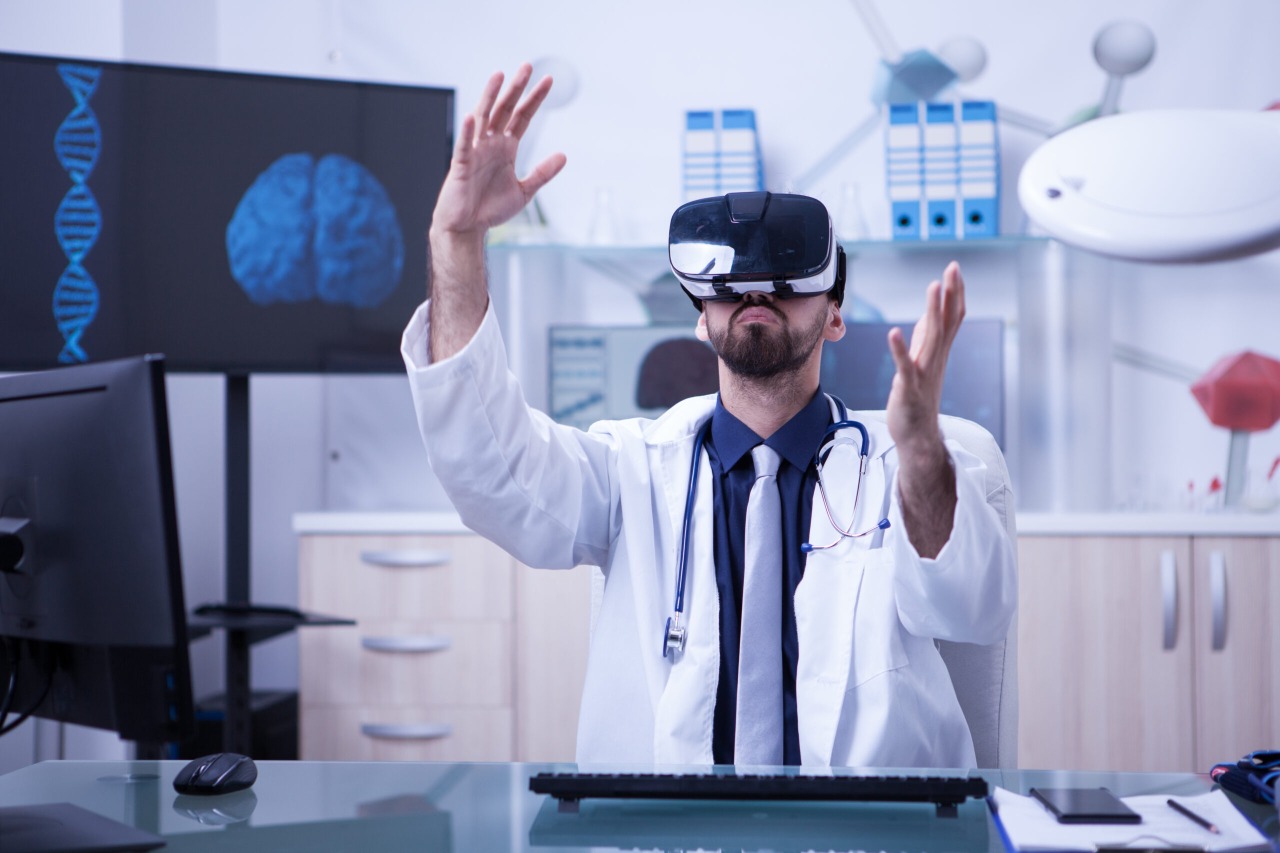Medicine

Virtual reality technology is used in one of the most important branches — medicine: in teaching students practical skills, preparing staff for complex operations, for the rehabilitation of patients and providing psychological assistance.
Training of students and medical staff
Virtual reality opens up new opportunities for training students and healthcare professionals.
The technology makes the passage of medical practice more accessible and visual for trainee doctors. Virtual training allows you to see realistic models of human organs and use medical instruments and equipment for treatment. Immersed in virtual reality, students can perform medical manipulations and learn how to provide assistance in emergency cases. The technology helps experienced medical staff to carefully prepare for a complex procedure and reduce possible errors.
Rehabilitation of patients
It is scientifically proven that the use of virtual reality simulators in the rehabilitation of patients makes it possible to relieve painful sensations. The parts of the brain that are associated with pain — the somatosensory cortex and the insular lobe-become less active in this case. Experiments show that virtual reality is even able to help patients endure some medical procedures without anesthesia, for example, in the treatment of patients with burns.
Studies have also shown that VR can be used in the therapy of patients with disabilities. People with amputated limbs sometimes face severe phantom pains that are difficult to treat with conventional methods. Virtual reality helps such patients. In a virtual environment, a person has the opportunity to do various actions with the help of a missing limb. The brain receives a signal that the amputated organ is present and the pain subsides.
VR technology is also successfully used in cognitive rehabilitation. Patients with injuries or diseases of the brain often have to re-learn simple daily actions. Reproducing everyday situations in a virtual environment helps patients practice them, moving on to more complex tasks each time. The program records the slightest progress of the patient. At the same time, the medical staff has the opportunity to observe and evaluate the actions of the patient and his prospects for treatment.
Psychological assistance
VR helps people recover from negative experiences and is also one of the most effective ways to treat phobias. Virtual reality allows you to create an environment based on the psychological problem of a particular patient. In the VR world, a person has the opportunity to experience unpleasant moments for him to try to cope with them. Their visualization in the virtual world helps to overcome phobias. A person sees the object of his fear and feels the same emotions as in real life, but at the same time he is aware that this is just an illusion. Confidence in his own safety gives him the strength to face his phobias» face to face » and defeat them.

